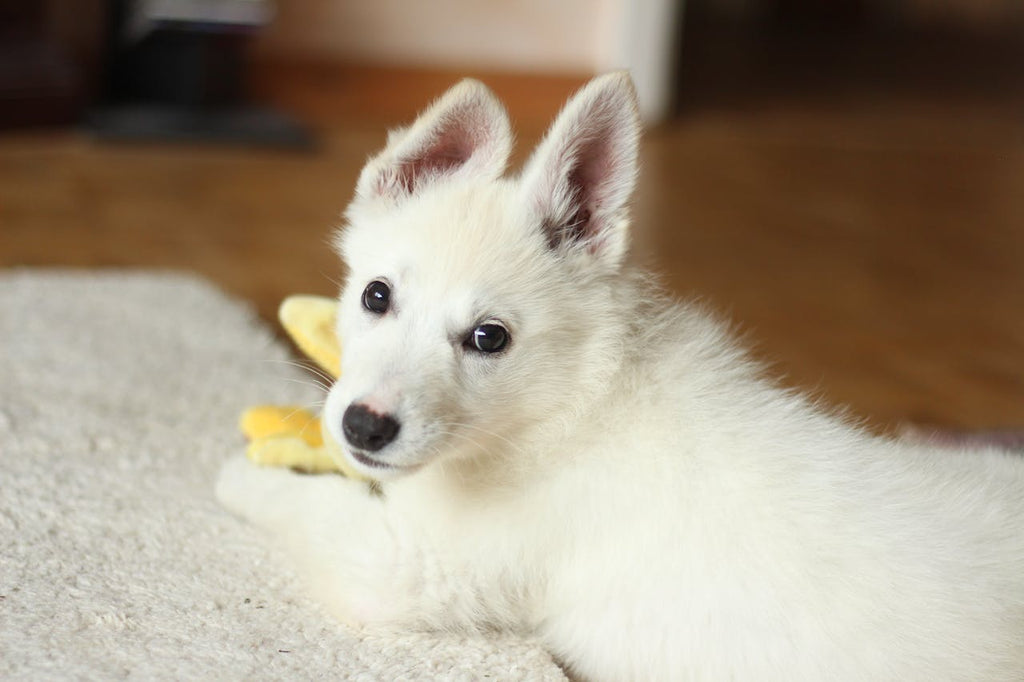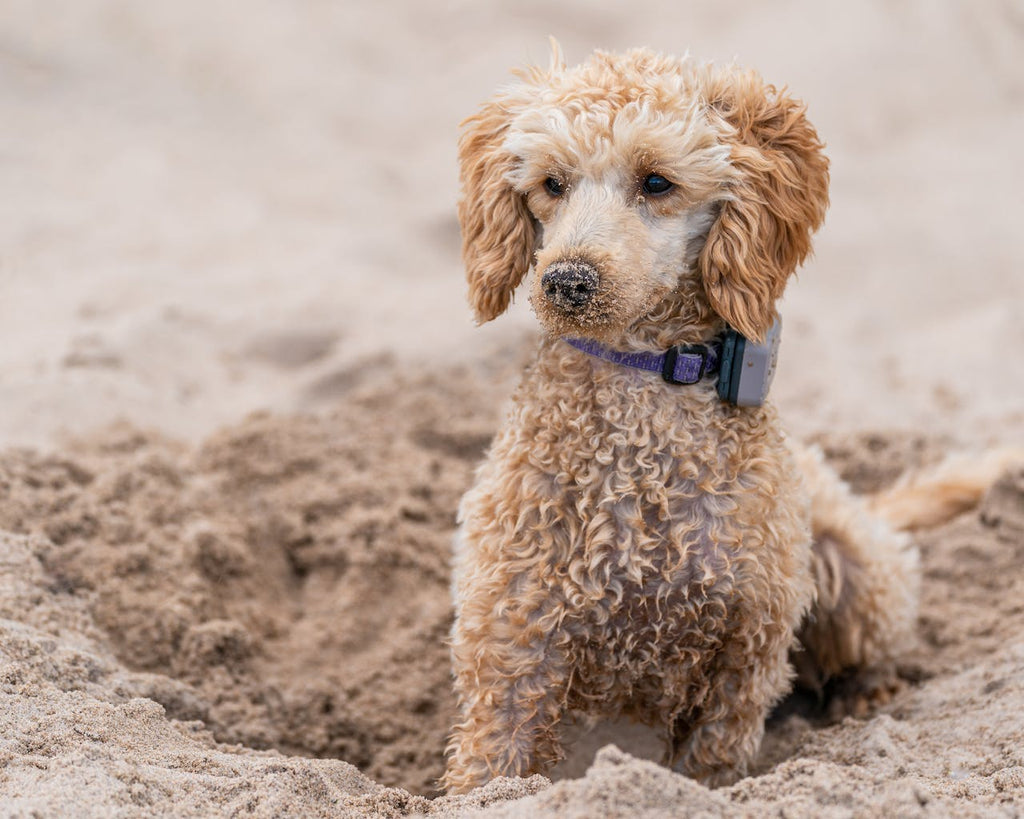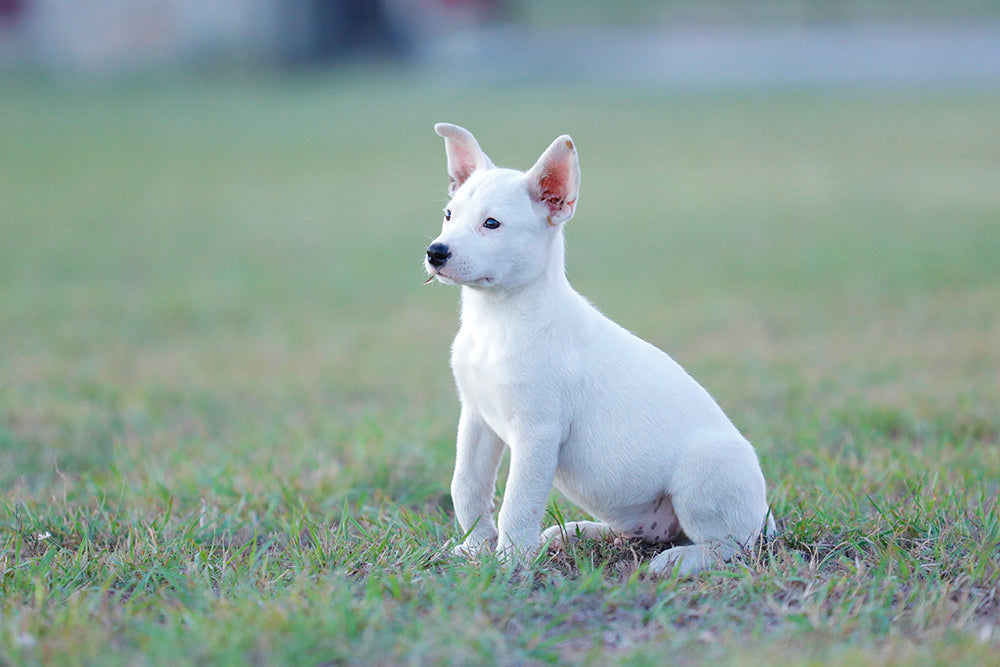
How to Master Perfect Puppy Crate Training in 6 Steps

So, you've decided to delve into the world of puppy crate training. First, give yourself a pat on the back!
This decision shows you're dedicated to providing structure and safety for your furry friend.
This blog will simplify the "how-tos" of crate training for a puppy, making the journey smooth for you and your pup.
Read More: Mastering the Art of Potty Training a Puppy in 7 Days
Why Puppy Crate Training? Understanding the Benefits
When you hear "crate training a puppy," what comes to mind?
For many, it's a puzzling concept.

Why confine a playful, energetic puppy to a crate?
Let's break it down.
1. Safety First!
A crate is a puppy's haven.
When you're not around to supervise, it ensures they won't get into anything harmful.
Think of it like a baby's crib.
2. Housebreaking Buddy
Puppies naturally avoid soiling their den.
So, a crate can significantly speed up housebreaking.
It teaches them to hold it in until it's potty time.
3. Zen Zone
For many dogs, their crate becomes a comforting zone.
A place where they can relax and take a breather from the world.
4. Preventing Destructive Behavior
Crate training helps stop destructive actions. Puppies are curious and enjoy exploring.
However, their exploration can sometimes lead to chewing on furniture, shoes, or electrical cords.
By providing a crate, you give them a safe and controlled environment where they can't engage in destructive habits.
Imagine coming home to find your favorite pair of shoes in ruins or your couch with a new design courtesy of your puppy's teeth.
With crate training, you can avoid these expensive and frustrating scenarios.
5. Stress-Free Travel
Crate training isn't just beneficial at home; it can also make travel easier and less stressful for both you and your puppy.
Whether going on a road trip or taking a flight, having a crate-trained pup makes transportation smoother.
A familiar crate gives your puppy a sense of security when in an unfamiliar place.
It also helps prevent accidents during travel, as most dogs won't soil their crate unless it's an absolute emergency.
6. Facilitating Vet Visits
Vet visits are a part of every dog's life, and they can be anxiety-inducing for some pups.
Crate training comes to the rescue again!
When your dog is already comfortable in their crate, it can make trips to the vet less stressful.
You can simply place your pup in their crate for the journey to the clinic, and once there, they'll have a familiar and safe space to wait.
This can help reduce their anxiety and make the entire experience less traumatic.
7. Time-Outs for Safety
Puppies can be rambunctious and overly excited, sometimes leading to situations where they might get hurt or hurt someone else unintentionally.
When your puppy needs a time-out, the crate is an ideal solution.
It's not a form of punishment but rather a way to provide a brief break when things get too rowdy.
It's like pressing the pause button on playtime, allowing you and your pup to cool down and prevent accidents.
Choosing the Right Crate
All right, you're convinced.
But now you wonder: what kind of crate should I get?
#1. Size Matters
Opt for a crate where your puppy can stand, turn around, and lie comfortably but not too spacious!
Remember, we're aiming for that cozy den feeling.
#2. Material World
Crates come in various materials – wire, plastic, or fabric.
Wire crates offer great ventilation.

Plastic ones feel more den-like. Fabric? Portable, but maybe not for chewers!
#3. Sizing it Right
Picking the correct crate size is vital for your puppy's comfort and safety.
It should be big enough for them to stand, turn, and lie down comfortably.
However, resist the temptation to go too big.
An excessively roomy crate might encourage your puppy to designate one corner as their bathroom, defeating the purpose of crate training.
We aim for that cozy den feeling, not a spacious studio apartment!
To determine the appropriate size, consider your puppy's breed and anticipated adult size.
Read More: Master Your Pup's Behavior in 5 Steps!
Some breeds grow rapidly, so you might want to invest in a crate with a divider panel.
This panel allows you to adjust the crate's size as your pup grows, ensuring a snug fit at every stage of its development.
#4. Material Matters
Now that you've got the size down, let's explore the material options for crates.
Each type has its pros and cons, so it's essential to choose one that aligns with your pup's needs and your lifestyle.
-
Wire Crates: These are the most popular choice for crate training. They offer excellent ventilation, allowing air to circulate freely, especially during hot weather. Wire crates also provide visibility, which can help alleviate any feelings of isolation your pup might have.
-
Plastic Crates: These crates provide a cozier, den-like atmosphere that many dogs find comforting. They're also typically lighter and more portable than wire crates, making them a great choice for travel. However, they don't offer as much visibility or ventilation.
-
Fabric Crates: Soft-sided crates are lightweight and easy to carry, great for busy puppy owners. They're often used for small breeds or puppies. However, they're not the best option for chewers or larger, more active dogs, as they're less durable and less secure than wire or plastic crates.
Consider your lifestyle, your pup's temperament, and your specific needs when choosing the material for your crate.
Remember that whatever material you select should provide a safe and comfortable space for your puppy to call their own.
Mastering the Puppy Crate Training Technique
Now, the meat and potatoes; how do you get your puppy to love the crate?
Make It Inviting
Creating an inviting crate space is key to winning your puppy's heart.
Besides a cozy bed, consider adding their favorite soft toys, a comforting blanket, or an old piece of your clothing with your scent.
These familiar items make the crate feel like a secure and reassuring haven, encouraging your pup to voluntarily enter it and spend time there comfortably.
Mealtime in the Crate
Mealtime can be a powerful tool in crate training.
Feeding your puppy inside the crate not only ensures they associate the crate with positive experiences but also helps establish a routine.
Dogs love food, so when they discover that their meals are served in the crate, they quickly form a positive connection.

Food equals happiness in their world, and this association will make crate time more appealing.
Gradual Introduction
Patience is your best friend during crate training and rushing the process can backfire.
Start with short sessions, perhaps just a few minutes at a time.
Over days or even weeks, gradually increase the duration as your pup becomes more at ease with the crate.
This gradual approach helps build a positive relationship between your puppy and their crate, making it a place they willingly choose to be.
Addressing Common Concerns
1. What If My Puppy Whines?Addressing your puppy's whining is a common concern during crate training.
Initially, some whining is natural as your pup adjusts to its new environment.
It's essential to resist the urge to give in, as letting them out when they whine teaches them that whining equals freedom.
Instead, be patient and wait for a moment of quiet before letting them out. This helps your puppy learn that quiet behavior is rewarded.
2. How Long Is Too Long in Puppy Crate Training?
The duration your puppy can stay in the crate varies with age.
Puppies have limited bladder control, so young pups shouldn't be crated for more than 3-4 hours.
As they age and their bladder capacity increases, you can gradually extend the duration.
However, it's essential to provide regular bathroom breaks and exercise to keep your pup comfortable and happy.
3. Is Crate Training Cruel?
Crate training is often misunderstood as cruelty, but it's quite the opposite when done correctly.
It's like a baby's crib – a safe space providing structure and security.
The crate serves as a protective den, not a punishment tool.
Misusing the crate, like using it as a place for discipline, can create negative associations.
When used appropriately, crate training ensures your puppy's safety, comfort, and well-being, making it far from cruel.
Managing Separation Anxiety
Now, as you continue your puppy crate training journey, you might encounter a common hurdle: separation anxiety.
Many pups can get anxious when left alone, even in their cozy crate.
To help your pup overcome this anxiety, start with short periods of alone time.
Leave the room for just a few minutes and gradually extend it.
This helps your puppy learn that being alone is okay.
When leaving or returning home, keep your comings and goings low-key.
Excited departures can make your pup anxious.
A simple goodbye or hello suffices.
Before you leave, provide some special toys or treats that are only available during crate time.
This creates positive associations with crate time.
Nighttime Crating: Sweet Dreams for All
Another concern that often arises is nighttime crating.
And the question is; how do you ensure a peaceful night's sleep for both you and your pup?
Make sure your puppy has a final bathroom break right before bedtime.
This reduces the chances of a middle-of-the-night emergency.
Position the crate in your bedroom initially.
This helps your puppy feel close to you, reducing anxiety.
As the puppy gets more comfortable, you can gradually move the crate to its permanent spot.
Nighttime whimpering or crying is common initially.
However, resist the urge to let your pup out immediately.
Wait until they settle down, even if it means wearing earplugs for a few nights.
Transitioning from Crate to Freedom
As your puppy grows and matures, it's important to transition them from crate-dependent to having more freedom in the house.
Start by leaving your pup out of the crate for short periods when you're home.
Monitor their behavior to ensure they're not getting into mischief.
Before giving them more freedom, puppy-proof your home and remove any hazards and valuables that could be damaged.
Remember, every puppy is unique. Some may be ready for more freedom sooner than others.
Trust your instincts and your pup's behavior to determine when to expand their boundaries.
Wrapping Up: Celebrate the Small Wins
Crate training a puppy is a journey, not a race.
Celebrate the milestones, whether it's the first time your puppy enters the crate willingly or the first night they sleep through without a peep.
Ultimately, you're setting the foundation for a happier, safer home.
Keep at it, stay consistent, and remember – you're doing great!
Every step you take is a step towards a well-adjusted, happy dog.
So, next time someone asks about crate training a puppy, you'll be the go-to guru.
Cheers to that!
Think you've mastered the name game? Wait till you see what else we've got in store! Our courses cover everything from basic commands to agility training. Don't miss out—sign up now!



